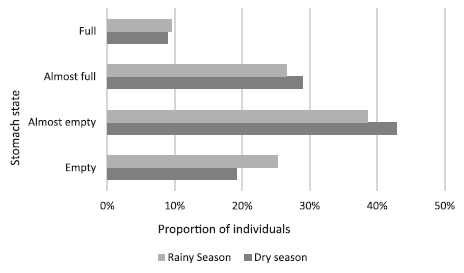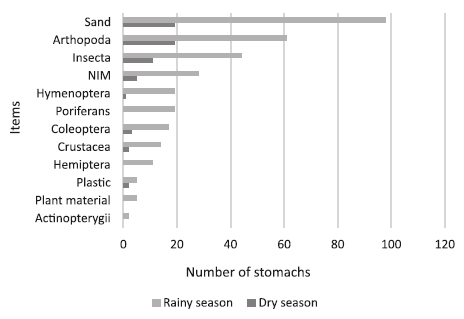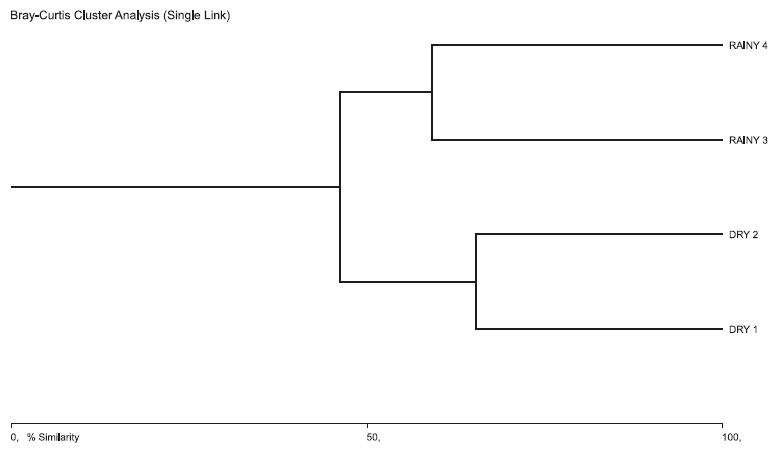Abstract
Decapod crustaceans have a wide variety of feeding habits, alternating among herbivory, predation, saprophagy, and filtration. The occupation of various trophic positions in the food web is a key feature in the evolution of the group. Thus, we analyzed the natural diet of the crab Ocypode quadrata (Fabricius, 1787), commonly known as the ghost crab and typically found on sandy beaches. The crabs were collected in the region of Ubatuba, between July 2016 and May 2017. The individuals were dissected in the laboratory, and each stomach was weighed and visually assessed in relation to the degree of repletion. After identification and classification, the items found were grouped for the analysis. In analyzing the stomach contents of Ocypode quadrata, 12 items were found: sand, Insecta, Hymenoptera, Hemiptera, Coleoptera, Crustacea, and other unidentified Arthropoda. We also found poriferans, Actnopterygii bones, plant pieces, non-organic material (plastic), and other non-identified materials. In the statistical analyzes, we observed seasonal differences in the composition of the diet, mostly related to the frequency of items consumed between dry and rainy seasons; the rainy season provided a greater diversity of items. Due to the great trophic spectrum of this species and tendency to feed on a wide range of items, O. quadrata is considered a generalist species, adapting according to the availability of prey in the wild.
Key-Words
Ghost crab; Natural diet; Ocypodidae; Seasonality; Trophic ecology




